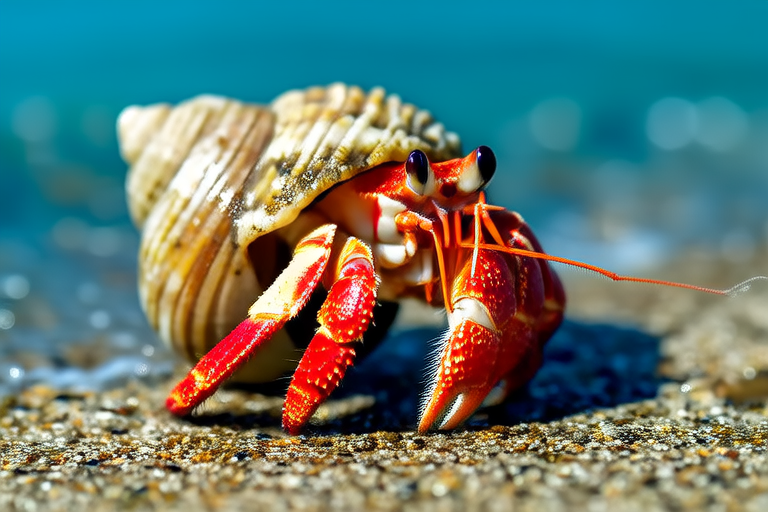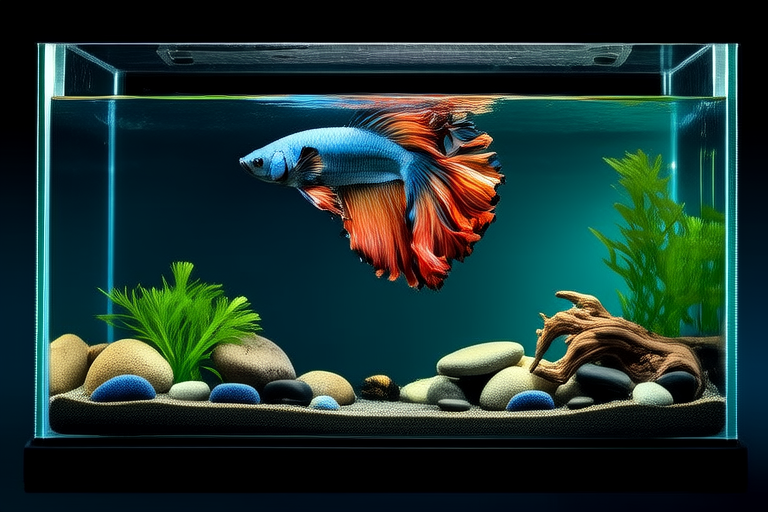
Tiny Terrors or Gentle Giants? Debunking Myths About Hermit Crabs
Hermit crabs are fascinating creatures that have captured the hearts of many animal enthusiasts. Often misunderstood, these small crustaceans have been subject to numerous myths and misconceptions regarding their behavior, care, and habitat preferences. This article aims to shed light on the truth behind some of these myths and provide valuable information for both novice and experienced hermit crab owners.
Introduction to Hermit Crabs
Hermit crabs are not true crabs but rather members of the superfamily Paguroidea. They are known for their unique ability to carry their homes on their backs. These homes, or shells, are essential for protecting their soft abdomens from predators and environmental hazards. Hermit crabs come in various species, each with its own distinct characteristics and needs. They are found in diverse habitats ranging from tropical beaches to coral reefs and even freshwater environments.
Dispelling Common Misconceptions
Myth: Hermit Crabs Are Aggressive
One of the most pervasive myths about hermit crabs is that they are aggressive and prone to attacking other animals. While it’s true that hermit crabs can be territorial, especially when it comes to finding a new shell, this behavior is rarely directed towards humans or other pets. In fact, hermit crabs are generally gentle creatures that prefer to avoid conflict. Their primary concern is finding a suitable shell to protect themselves.
Myth: Hermit Crabs Require Little Care
Another common misconception is that hermit crabs need minimal care. While hermit crabs may seem low-maintenance at first glance, they actually require specific conditions to thrive. Proper care includes maintaining appropriate humidity levels, providing a variety of shells for them to molt into, and ensuring a balanced diet. Neglecting these needs can lead to health issues and a shortened lifespan.
Myth: Hermit Crabs Live for Only a Few Years
Contrary to popular belief, hermit crabs can live for several decades under optimal conditions. The average lifespan of a hermit crab can range from 10 to 40 years, depending on the species and the quality of care provided. Factors such as diet, water quality, and environmental conditions play significant roles in determining their longevity.
Scientific Facts About Hermit Crabs
Habitat Preferences
Hermit crabs are adaptable creatures that can thrive in various environments. However, they generally prefer warm, humid climates similar to their natural habitats. In captivity, it’s crucial to recreate these conditions by providing a tank with a heat source, proper ventilation, and a substrate that retains moisture. Additionally, offering a shallow dish of saltwater allows hermit crabs to periodically dip their abdomens, which is essential for their respiratory system.
Dietary Requirements
A balanced diet is vital for the health and well-being of hermit crabs. Their diet should consist of a variety of foods, including commercial hermit crab pellets, fresh fruits and vegetables, and occasional protein sources like fish or shrimp. It’s important to ensure that any food provided is free from pesticides and harmful chemicals. Offering a mix of calcium-rich foods, such as cuttlebone or crushed eggshells, helps maintain strong exoskeletons during molting.
Social Behaviors
Hermit crabs are naturally social creatures that enjoy interacting with others of their kind. In the wild, they often live in groups and participate in activities like shell swapping. In captivity, housing multiple hermit crabs together can promote their social instincts. However, it’s essential to provide enough space and resources, such as shells and food, to prevent competition and stress among them.
Tips for Responsible Ownership
Providing a healthy and enriching environment for hermit crabs is key to responsible ownership. Here are some tips to help you create the best possible home for your hermit crab:
- Humidity Control: Maintain a humidity level between 70% and 80% to prevent dehydration and respiratory issues.
- Temperature Regulation: Keep the temperature within the range of 75°F to 85°F (24°C to 29°C) to ensure optimal health.
- Shell Variety: Offer a wide selection of shells for molting and exploration. Regularly check for worn-out shells and replace them as needed.
- Safe Exploration: Provide safe areas for your hermit crabs to explore outside of their tank under supervision. Ensure that all surfaces are clean and free from harmful substances.
- Regular Cleaning: Clean the tank and its accessories regularly to prevent the buildup of bacteria and toxins.
Conclusion
Hermit crabs are complex and fascinating creatures that deserve our respect and understanding. By debunking common myths and providing accurate information about their behavior and care, we can ensure that these gentle giants receive the attention and care they need to thrive. Whether you’re a seasoned hermit crab owner or considering adopting one, taking the time to learn about their specific needs will greatly enhance your experience and contribute to their well-being.




